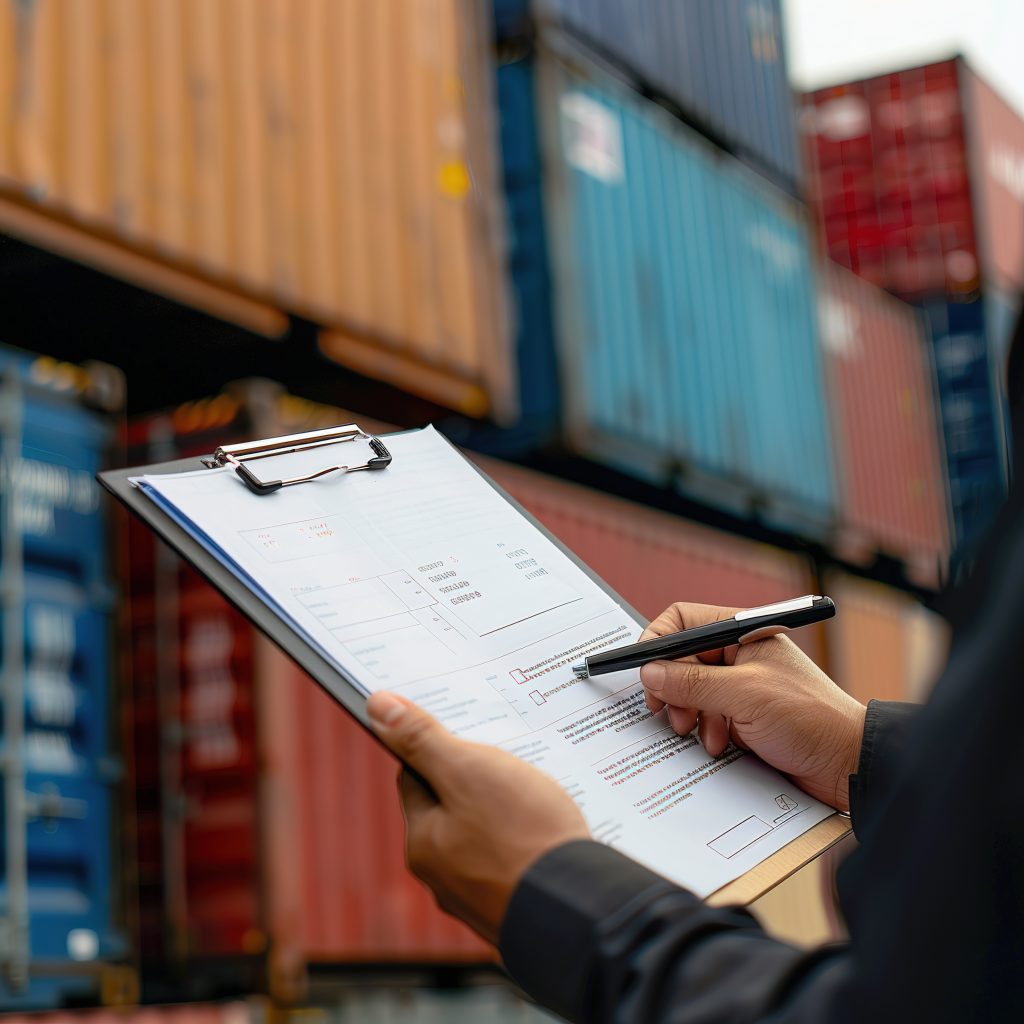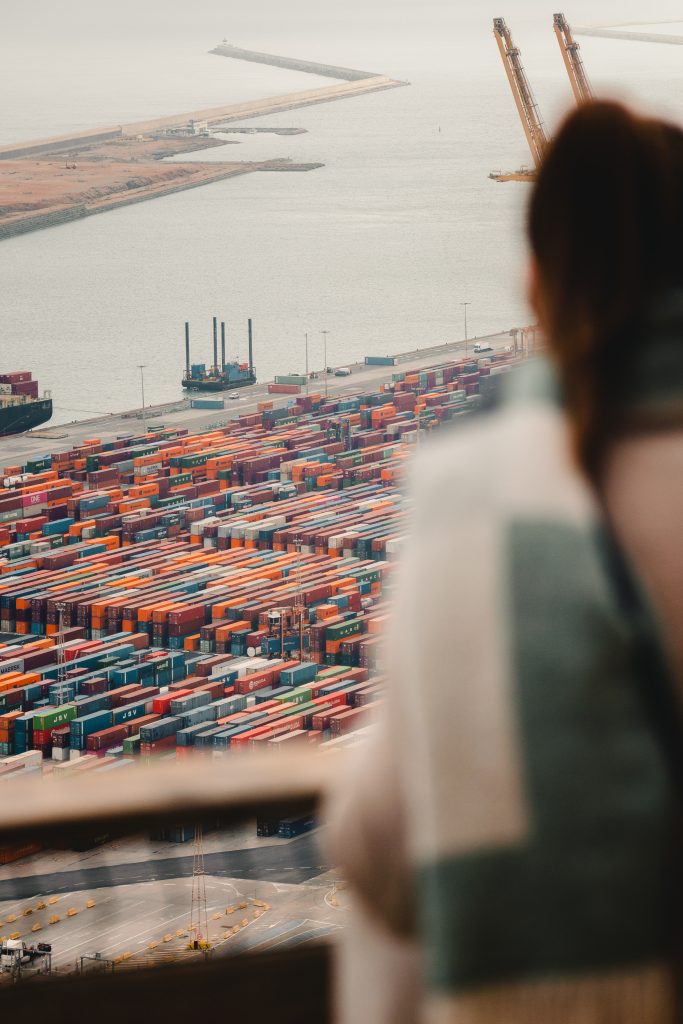Exporting leather goods, particularly in the handbag and footwear sectors, has long been one of the most prominent activities in the field of handicrafts and luxury trade. The significance of this industry lies in the combination of artistry, craftsmanship, quality, and high economic value, which has maintained its position throughout history and has even gained greater importance in recent years.
On a global scale, the leather goods market is steadily expanding. International reports indicate that the global market value of leather products will reach hundreds of billions of dollars in the coming years, with a significant portion of this growth driven by the increasing demand for handmade and high-quality goods. This trend creates a unique opportunity for countries with a rich heritage in leather production, such as Iran.
Despite this vast potential, successful entry into international markets cannot rely solely on product quality. Exporters must address a complex set of technical, commercial, cultural, and legal factors. In fact, today’s exports go far beyond merely shipping goods to a destination country; it is a multi-layered process that includes market research, compliance with quality and environmental standards, choosing optimal logistics routes, managing financial risks, and building sustainable relationships with international clients.
The key point is that global markets are highly competitive, and new brands must not only match industry leaders in terms of quality but also differentiate themselves by offering added value and unique customer experiences to secure their position. This is where the role of specialized export brokers becomes crucial.
Brokers can, through their in-depth knowledge of markets, connections with extensive buyer networks, mastery of customs and logistics procedures, and expertise in international branding and marketing, transform the export process from a high-risk, complex journey into a safe, structured, and profitable pathway.
This article, by examining five major challenges in exporting leather goods and providing practical solutions to overcome them, demonstrates how the services of a professional broker — and in particular the MMF Market platform — can facilitate access to international markets for Iranian exporters.
2. Challenge One: The Complexity of International Standards and Certifications
One of the fundamental obstacles in exporting leather goods is the complexity and diversity of international standards and certification requirements. Each target market has its own set of rules and regulations, and failure to comply with them can lead to delays in customs clearance, heavy fines, or even the return of shipments.
This challenge is especially critical for countries that are still developing their export markets, such as Iran, since exporters must simultaneously maintain product quality and authenticity while meeting the legal and technical requirements of each destination.
2.1. Nature and Diversity of Standards
Standards and certifications can be categorized into several main groups:
- Quality and Performance Standards
Cover aspects such as abrasion resistance, stitching quality, adhesive strength, and product lifespan.
Example: EN ISO 20344 for footwear in Europe. - Environmental and Chemical Standards
Restrict or ban the use of harmful chemicals such as Chromium VI and heavy metals.
Example: EU REACH regulations controlling the use of specific chemicals. - Cultural and Religious Standards
Ensure product compliance with cultural and religious expectations, such as Halal certification in Islamic countries. - Labeling and Packaging Requirements
Require detailed product information, including materials, country of origin, and care instructions.
2.2. The Impact of Compliance or Non-Compliance on Exports
- Full Compliance → Builds buyer trust, facilitates market entry, and reduces legal risks.
- Non-Compliance or Partial Awareness → Results in goods being held at customs, loss of clients, and damage to brand reputation.

2.3. Comparative Table of Certification Requirements in Key Markets
| Target Market | Main Quality Requirements | Environmental Requirements | Cultural / Specific Requirements | Sample Certifications |
|---|---|---|---|---|
| European Union (EU) | Abrasion resistance, stitching quality, strong adhesives | Restriction of Chromium VI, compliance with REACH | – | CE Mark, REACH Compliance |
| United States (USA) | ASTM standards for durability and quality, detailed labeling | Restriction of hazardous chemicals | – | ASTM, CPSIA Compliance |
| Gulf Cooperation Council (GCC) | Material quality suited to hot climates | – | Religious requirements (Halal) | Halal Certificate, SASO |
| Japan | Precise and refined design, premium quality | Minimal use of chemicals | Preference for minimalist design | JIS Mark, Eco Mark |
| Australia | Durability under specific climatic conditions | Chemical control | – | AS/NZS Standards |
2.4. Common Challenges for Exporters in This Area
- Lack of familiarity with the detailed regulations of the destination country, especially annual updates.
- High costs of testing and certification for small shipments.
- Differences in standards across markets, making it difficult to manufacture a single product that meets all requirements.
2.5. Our Brokerage Solutions for Overcoming This Challenge
- Developing and maintaining an up-to-date database of all standards and import regulations in target markets.
- Partnering with internationally accredited laboratories to conduct quality and environmental testing before export.
- Providing expert consulting on market selection based on the manufacturer’s capacity to comply with standards.
- Facilitating the acquisition of necessary certifications in the shortest possible time and at optimized costs.
- Organizing training workshops for production teams to ensure compliance with standards from design to packaging.
3. Challenge Two: Intense Competition with Global Brands
The global leather goods market, particularly in handbags and footwear, is dominated by established, well-known brands with decades of experience, massive marketing investments, and extensive distribution networks. These brands are not only firmly ingrained in the minds of consumers but also set the expectations for the market.
For emerging brands or new exporters, competing against such giants often feels like entering a battlefield where the opponent already seems to have won—unless intelligent strategies for differentiation and added value are adopted.
3.1. Reasons for the Superiority of Global Brands
- High Brand Awareness – Consumers immediately associate the brand name with quality and a distinctive style.
- Massive Marketing Investments – TV campaigns, participation in fashion shows, and collaborations with international influencers.
- Multi-layered Distribution Networks – Dedicated stores, partnerships with luxury retailers, and global online sales.
- Customer Trust and Loyalty – Previous successful purchases drive repeat buying behavior.
- Continuous Quality Control – Integrated production processes with strict oversight.
3.2. Challenges Faced by Emerging Brands
- Limited marketing budgets, making large-scale promotional campaigns difficult.
- Lack of recognition in the target market, requiring initial awareness-building.
- Absence of wide distribution networks to access diverse markets.
- Initial consumer skepticism regarding the quality of new products.

3.3. Comparative Table: Established Global Brands vs. Emerging Brands in Leather Exports
| Feature | Established Global Brands | Emerging / Newcomer Brands |
|---|---|---|
| Brand Awareness | Very high, decades of presence | Low to medium, requires market introduction |
| Advertising Budget | Very high, international campaigns | Limited, focus on digital marketing |
| Distribution Network | Wide, multi-channel | Limited to a few specific markets |
| Consumer Trust | High, thanks to reputation and warranty | Low to medium, requires proof of quality |
| Design Flexibility | Lower, due to large-scale production lines | Higher, possibility of customized production |
| Pricing | Higher than market average | Ability to compete on price at entry level |
3.4. Recommended Strategies for Successful Competition
- Brand Storytelling – Highlight the authenticity, craftsmanship, and artistry of Iranian handmade leather to convey a sense of value and uniqueness.
- Entry via Niche Markets – Instead of competing head-on with major brands across all categories, focus on a specific niche (e.g., luxury handmade leather bags or traditional shoes with modern design).
- Partnerships with Reputable Local Retailers – Positioning products alongside established brands helps build customer trust.
- Targeted Digital Campaigns – Leverage Instagram, TikTok, and Pinterest to attract specific customer segments at a lower cost compared to traditional advertising.
- Customization – Offer products with personalized options such as color, size, or decorative details tailored to customer preferences.
3.5. Our Brokerage Solutions for This Challenge
- Designing a Market Entry Plan focused on brand strengths.
- Creating international branding campaigns in collaboration with well-known designers and models.
- Negotiating with multi-brand luxury stores in target markets to showcase products.
- Offering shared marketing packages to distribute advertising costs among multiple brands.
4. Challenge Three: Issues in the International Supply Chain and Logistics
The supply chain and logistics are the beating heart of any export operation. In the leather goods sector, this becomes even more critical since product quality and appearance must remain intact from the factory to the international customer. Any delays, mistakes in shipping, or improper packaging can diminish product value, lead to returns, or result in lost clients.
4.1. Key Logistics Challenges in Leather Exports
- Inappropriate Transportation Method – Choosing a cheaper but slower or riskier method that compromises product quality.
- Customs Issues – Missing documents or errors in declarations causing shipment delays.
- Non-standard Packaging – Use of weak cartons or materials that fail against moisture, pressure, or temperature fluctuations.
- Lack of Coordination Across the Supply Chain – Delays in production or domestic transport disrupting international shipping schedules.
- Hidden Logistics Costs – Unexpected expenses such as warehousing, insurance, or port fees.
4.2. Sensitivity of Leather Products During Transport
- High Humidity → Mold growth or color changes.
- Physical Pressure → Permanent creases or deformation.
- High Temperature → Drying or surface cracking of the leather.
For this reason, leather products require transport under controlled conditions, with the use of desiccants and multi-layer protective packaging.

4.3. Comparative Table of Main International Transportation Methods for Leather Products
| Method | Approx. Delivery Time | Relative Cost | Damage Risk | Advantages | Disadvantages |
|---|---|---|---|---|---|
| Air Freight | 3–7 days | High | Very low (with standard packaging) | Fast, suitable for small and urgent shipments | Expensive, weight limitations |
| Sea Freight | 20–45 days | Low to Medium | Medium (controllable with desiccants) | Cost-effective for large volumes, high capacity | Long transit time, potential customs delays |
| Land Transport | 5–15 days | Medium | Low to Medium | Suitable for neighboring countries, route flexibility | Limited by geography and security issues |
| Express International Post | 3–10 days | Medium to High | Very low | Online tracking, door-to-door service | More expensive than regular methods, weight limitations |
4.4. Real Example of a Logistics Challenge
An Iranian leather bag exporter to Europe chose low-cost sea freight without using desiccants. Upon delivery, the products had developed mold. This not only resulted in the return of goods and financial losses but also damaged the brand’s reputation.
4.5. Our Brokerage Solutions for This Challenge
- Product and destination analysis before selecting a transportation method.
- Collaboration with specialized logistics companies experienced in handling luxury leather products.
- Design and supervision of moisture-resistant and durable packaging.
- Use of online tracking for real-time shipment status.
- Negotiation and contracting with logistics providers to reduce insurance and shipping costs.
5. Challenge Four: Currency Fluctuations and Financial Risks
In international trade of leather products, currency fluctuations are one of the most unpredictable yet impactful factors affecting profitability and financial stability. Since most export transactions are carried out in international currencies such as USD, EUR, or GBP, exchange rate changes can cause sudden increases or decreases in profit margins.
For example:
- If the destination currency depreciates, the purchasing power of buyers decreases, potentially reducing orders.
- If the domestic currency weakens against foreign currencies, exporters may see short-term profit growth, but importing raw materials or equipment becomes more expensive in the future.
- Frequent and sharp exchange rate fluctuations reduce buyer confidence in pricing stability and contracts.

5.1. Main Sources of Financial Risk in Exports
- Exchange rate fluctuations between contract signing and payment receipt.
- Hidden costs of money transfers such as bank fees or unfavorable currency conversion rates.
- Discrepancies between official and free market exchange rates, which may complicate pricing.
- Lack of secure international payment systems in certain countries.
5.2. Comparative Table of Currency Risk Mitigation Tools in Exports
| Financial Tool | How It Works | Advantages | Disadvantages | Best Suited For |
|---|---|---|---|---|
| Forward Contract | Fixes the exchange rate for a specified future date | Eliminates fluctuation risk, predictable pricing | Requires accurate export volume forecasting | Large, long-term contracts |
| Options Contract | Right to buy or sell currency at a fixed rate, no obligation | High flexibility, potential gain from favorable movements | Premium cost of option purchase | Companies with moderate risk appetite |
| Currency Swap | Exchange of currencies at agreed rates on two dates | Useful for stable cash flow | Complex execution | Long-term international partnerships |
| Partial Payment | Splitting payment into installments to reduce fluctuation impact | Flexible risk management | Higher transaction costs | Small to medium-sized orders |
| Multi-Currency Account | Holding export revenues in multiple currencies | Reduces reliance on a single currency | Requires management of several accounts | Exporters to multiple markets |
5.3. Real Example of Currency Risk
An Iranian leather shoe exporter to Europe signed a fixed-price three-month contract in euros. During those three months, the euro depreciated by 15% against the local currency. Result: The final profit was nearly halved, leaving some costs uncovered.
5.4. Our Brokerage Solutions for This Challenge
- Collaborating with reputable banks and financial institutions to provide currency risk hedging tools.
- Using multi-stage payments to distribute risks throughout the contract timeline.
- Offering pricing consultancy that accounts for potential currency fluctuations.
- Supporting the establishment of multi-currency accounts to diversify export revenues.
- Designing protective currency clauses in international contracts.
6. Challenge Five: Insufficient Understanding of Consumer Preferences and Market Trends
In leather product exports, even the best quality is not enough without alignment with consumer preferences in the target market. Each market has its own cultural, economic, and aesthetic factors that shape purchasing decisions.
The challenge is that many exporters, due to insufficient market research or reliance on domestic experience, export products that do not align with the design, color, size, or functional expectations of the target consumers. This mismatch often leads to low sales, unsold inventory, and reputational damage to the brand.
6.1. Key Factors Influencing Consumer Preferences in Target Markets
- Local culture and traditions – Colors, patterns, and even materials are often tied to cultural norms.
- Climate conditions – For example, in humid regions, products must be resistant to moisture.
- Global fashion trends – Rapidly changing fashion cycles, updated each season.
- Functional needs – Weight, durability, comfort, and multifunctionality of products.
6.2. Comparative Table of Consumer Preferences and Market Trends in Key Markets
| Target Market | Preferred Design Style | Popular Colors | Key Expected Features |
|---|---|---|---|
| Europe | Minimalist, classic | Black, brown, navy | High-quality stitching, durability, reputable branding |
| North America | Modern, sporty | Black, gray, beige | Ergonomics, comfort, multifunctionality |
| Middle East | Luxurious, detailed | Gold, dark brown, red | Eye-catching designs, premium materials, halal certification |
| East Asia | Delicate, lightweight, practical | White, pink, cream | Compact design, lightweight, attractive packaging |
| Australia | Sporty-casual | Brown, khaki, olive green | Water resistance, climate resilience |
6.3. Real Example
An Iranian leather bag manufacturer exported a luxury, heavy design to the Japanese market. Despite high quality, the product received little attention due to its weight and non-minimalist style. Lesson learned: Failure to align with local lifestyle and fashion trends can push even the best products out of competition.
6.4. Our Brokerage Solutions for This Challenge
- Conducting market research before entering each country or region.
- Partnering with local fashion designers and consultants to adapt products to local tastes.
- Offering limited editions tailored to national festivals or cultural events.
- Continuously monitoring global fashion trends via fashion platforms and sales data.
- Collecting and analyzing customer feedback after market entry to improve designs.
7. How Our Brokerage Solves These Challenges
Successful leather product exports require precise coordination between production, regulatory compliance, marketing, logistics, and financial management. Our specialized brokerage firm transforms the export journey from a complex and high-risk process into a secure, transparent, and profitable pathway—by combining field experience, international networks, and digital tools.
7.1. Our Integrated Approach to Solving the Five Key Export Challenges
| Export Challenge | Main Problem | Our Brokerage’s Specialized Solution | Exporter’s Advantage |
|---|---|---|---|
| Complexity of standards & certifications | Lack of familiarity with market requirements and high certification costs | Creating an up-to-date database, partnering with accredited labs, facilitating certification issuance | Risk-free market entry and prevention of customs delays |
| Intense competition with global brands | Low brand awareness, limited marketing budget | Targeted digital campaigns, influencer collaborations, brand storytelling | Increased brand recognition and loyal customer acquisition |
| Supply chain & logistics challenges | Delays, product damage, hidden costs | Optimized shipping method selection, durable packaging, real-time tracking | On-time, damage-free delivery with reduced logistics costs |
| Currency fluctuations & financial risks | Reduced profitability and price instability | Use of hedging tools, phased payments, multi-currency accounts | Protected profit margins and financial stability |
| Insufficient knowledge of consumer trends | Misaligned designs and products with consumer preferences | Market research, partnerships with local designers, limited edition product lines | Higher sales conversion rates and customer satisfaction |
7.2. Our Key Brokerage Services
- Specialized export consulting – Comprehensive market analysis, opportunity identification, and entry strategy development.
- Certification support – From selecting the right standards to testing and document acquisition.
- International marketing & branding – Executing online and offline campaigns tailored to target market cultures.
- Integrated logistics management – Coordinating transport, packaging, insurance, and customs clearance.
- Financial & currency risk management – Advisory on hedging tools and secure payment contracts.
- Trend research & analysis – Continuous monitoring of market changes and product update recommendations.
7.3. Advantages of Working with Our Brokerage
- Faster market entry – Reducing time-to-market from months to weeks.
- Cost optimization – Leveraging exclusive contracts and trusted partnerships.
- Direct access to real buyers – Networks across Europe, the Middle East, East Asia, and North America.
- Higher success rates – With customized strategies tailored for each market.

8. The Unique Role of MMF Market in Facilitating Leather Exports from Iran
MMF Market is not just an export brokerage—it is a comprehensive export management platform that covers the entire process, from market identification to final product delivery. By combining market knowledge, international networks, and digital technology, MMF Market enables Iranian exporters to enter global markets with minimal risk and maximum return.
8.1. MMF Market’s Core Areas of Operation
| Area of Operation | Specialized Services |
|---|---|
| Standards & Certifications | Consulting and facilitating certification for CE, REACH, ASTM, SASO, and Halal with minimum cost and time. |
| Branding & Marketing | Designing advertising campaigns tailored to the target market, managing social media, participating in international exhibitions. |
| Logistics & Transportation | Selecting the optimal shipping route and method, designing damage-resistant packaging, online shipment tracking. |
| Financial & Currency Management | Advising on currency risk hedging tools, establishing multi-currency accounts, drafting secure payment contracts. |
| Market & Trend Research | In-depth analysis of target markets, identifying customer preferences, providing periodic reports on global trends. |
8.2. MMF Market’s Distinct Advantages Over Other Brokers
- Exclusive database of import regulations and buyer networks across 30+ countries.
- Integrated online platform for managing orders, documentation, logistics status, and buyer communication.
- Practical experience with Iranian brands and in-depth knowledge of the strengths of Iranian leather and handicrafts.
- Active global sales network in Europe, the Middle East, East Asia, and North America.
- Multilingual support to facilitate communication with buyers and international organizations.
8.3. Benefits of Partnering with MMF Market for Iranian Exporters
- Faster entry into target markets using established infrastructure and connections.
- Reduced legal and financial risks through standardized contracts and expert advisory.
- Higher success rates in exports by aligning products with real market data.
- Direct access to key buyers without the need for multiple intermediaries.
9. Conclusion and Recommendations
Leather exports—especially in bags and shoes—present a major opportunity for economic value creation, job generation, and showcasing Iranian craftsmanship to the world. However, as this article highlighted, the journey involves five major challenges:
- Complex international standards & certifications – Each target market has unique rules and requirements that must be met.
- Intense competition with global brands – Major brands dominate the market, requiring differentiation and smart marketing strategies.
- International supply chain & logistics issues – Timely and safe delivery requires optimal shipping, proper packaging, and full coordination.
- Currency fluctuations & financial risks – Volatile exchange rates can quickly impact profitability, demanding risk-mitigation tools.
- Insufficient knowledge of consumer tastes & trends – Products must align precisely with the preferences and needs of target customers.
Key Recommendations for Export Success
- Market research before entry – Collecting accurate data on consumer preferences, competitors, and legal requirements.
- Investment in quality & standards – Complying with international benchmarks builds customer trust and eases market entry.
- Building a strong brand – A compelling brand story, visual identity, and authenticity help compete globally.
- Financial risk management – Utilizing advanced financial tools to hedge currency risks and ensure profitability.
- Optimized logistics – Selecting the right shipping method and packaging to maintain quality while reducing costs.
The Strategic Role of Specialized Brokers and MMF Market
As discussed earlier, specialized brokers and platforms like MMF Market can make the export process simpler, less risky, and faster. With their support, Iranian exporters can:
- Enter target markets confidently and quickly.
- Align their products with international standards.
- Minimize export costs and risks.
- Position their brand alongside global industry leaders.
Final Conclusion
In today’s competitive world, exporting leather products requires more than just producing high-quality goods. It demands a comprehensive strategy that includes market research, compliance with standards, creative marketing, professional logistics, and precise financial management. By partnering with platforms like MMF Market, Iranian exporters can transform from small players into internationally recognized brands.


No comments yet.